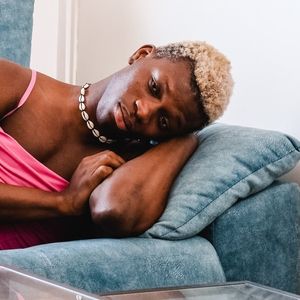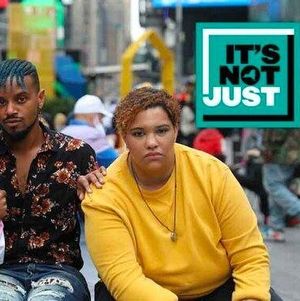Halloween is upon us! The one night of the year when witches are celebrated, not persecuted. When the childless, cat-loving, moon-worshipping women get to revel in their supposed otherness.
But behind the point hats and bubbling cauldrons lies a history far less whimsical: stories of how women who defied society’s norms were shamed, cast out, and hunted. From the flames of the witch hunt craze to today’s political rhetoric on “childless cat ladies,” the world has long feared and vilified strong, independent women.
While we don our best black velvet and celebrate our inner enchantress this Halloween, perhaps it’s time to reflect on the real sorcery within us. To recognize the history of surviving centuries of persecution and recognize a force wielded far stronger than any broomstick.
The ballot.
The Dark Legacy of Witch Trials: The Villified Strong Women
The Salem Witch Trials are a quintessential example of punishment for independent women. Beginning with the elderly Bridget Bishop, a woman with three marriages under her belt and co-owner of two taverns, the trials resulted in more than 200 people accused of practicing witchcraft in the then Massachusettes Colony between 1692 and 1693. Of the 19 executed, 13 were women. However, the trials at Salem were not the first large-scale hunt of witches. The Connecticut witch trials began in 1647. At a time when disease, failed harvests, and cold winters were rampant, Puritans looked to the otherness of their neighbors to place blame at their feet by the time the Salem witch trials even began—and may have lasted well into the early 1700s, according to new evidence. Out of the estimated 36 individuals tried, 11 were executed by hanging.
Nine of them were women.
These trials are the descendants of persecuted midwives and healers in earlier centuries. Women like Isabel Hernandez, who possessed knowledge of herbal medicine, were often targeted, due to the fear and suppression of women who held a form of power outside of the male-dominated social structures. It’s from the Middle Ages that we also see the emergence of the childless cat lady trope in the guise of the witch. With her devilish familiar in the shape of a black cat, she could cause harm to individuals and the whole community.
Strong, Single Women who defied the norms and paid the price
The power of being independently minded has intimated men throughout history. Women like the 16th-century queen, Elizabeth I of England, were deemed far too abnormal for refusing to submit to any male authority. The same could be said of another woman, Joan of Arc, who was inspirational to some, and intimidating to others. The 15th-century French peasant girl who fought for King and Country against the English during the Hundred Years’ War, Joan carried a sword in one hand and a banner in the other while receiving supposed divine visions. This badass even chose to wear male garb at a time when it was deemed heretical! Sadly, when captured, Joan was charged, among other accusations, cross-dressing and supposed witchcraft.
But her actual “crime” was being a powerful woman who acted independently and dared to question authority.
Spinster and Hysteria Used to Disempower Women
Women choosing not to marry or have children—or being unable to—somehow meant their social currency wasn’t valued. Existing as a single, independent woman in the pre-20th century was deemed irregular if unsuitable, with one outlet in the late-Victorian era writing “the old maid would not be typical of her class without the cat.” The dreaded “cat lady” or spinster tropes were drolled out to suggest that, as these women existed outside social norms, they shouldn’t have a say in how society functioned, let alone political rights.
Women like Susan B. Anthony and Elizabeth Cady Stanton, who advocated for voting rights and political participation, were frequently labeled as mentally unstable, perpetuating a belief that strong-willed women were unfit to make choices, let alone fight for equality. Hysteria was associated with women’s “inappropriate thoughts” about (gasp!) the right to vote or (clutch pearls!) the right to own property or (monocle pops out!) the right to open a bank account or credit line—something finally awarded to U.S. women in 1974! In the 19th century, “hysterical” women were placed in mental asylums; hysteria, derived from the Greek word for uterus, made the suggestion that their rebellious women were rooted in biology and thus dismissed.
The ‘Witch Mark’ and Modern-Day Body Scrutiny
The desire to identify “pure” womanhood through biology may seem recent. But it, too, is an ancient practice. During trials, physical examinations of women included identifying “witch marks,” bodily marks believed to be associations with devilish works. The misidentification of moles, scars, or birthmarks often resulted in the deaths of hundreds if not thousands of women over the centuries. Compare this to the modern-day “transvestigations,” where people scrutinize bodies to find “proof” of otherness. While this impacts trans and gender-nonconforming individuals, cisgender women are not immune to the practice, centered on fear of women who don’t conform to Western-typified beauty standards.
Political Witches: Why Strong Female Leaders Still Face Backlash
As women entered forays once exclusive to men, tropes of being unfeminine, cold, or untrustworthy came into play. Look at Hillary Clinton’s presidential runs and the snides made on how she presented herself. And we’ve seen in this election cycle how Kamala Harris has faced criticism by the likes of JD Vance and Donald Trump, ranging from her ambition over motherhood and defiance over submission—not to mention the added questioning of her racial identity. These attacks frame and highlight how women of power are threatening. The world may sharpen its pitchforks, trying to hunt down the witches among us.
But maybe it’s time we all stop hiding our broomsticks.
Broomsticks, Ballots, and Breaking Barriers: The Real Magic of Women’s Resistance
Let’s remember the brave forebears who chose to live a life they felt like living in a world that demanded conformity. Remember the spirited folks preyed upon and persecuted for trying to shape the world through grit and determination rather than charms and spells. And remember the brave women who continue to fight for equality, from our local school boards to the highest offices in the land.
As we celebrate the magic of Halloween night, embracing our inner witches, let’s not forget to show up in all our power and glory come Election Day. Because the real enchantment isn’t just in the moonlight spells we cast but in the daylight—where we dare to claim our voices, our rights, and our future.
Marie-Adélina de la Ferrière is the Community Editor at equalpride, publisher of The Advocate.
Voices is dedicated to featuring a wide range of inspiring personal stories and impactful opinions from the LGBTQ+ and Allied community. Visit pride.com/submit to learn more about submission guidelines. We welcome your thoughts and feedback on any of our stories. Email us at voices@equalpride.com. Views expressed in Voices stories are those of the guest writers, columnists and editors, and do not directly represent the views of The Advocate or our parent company, equalpride.

















































































